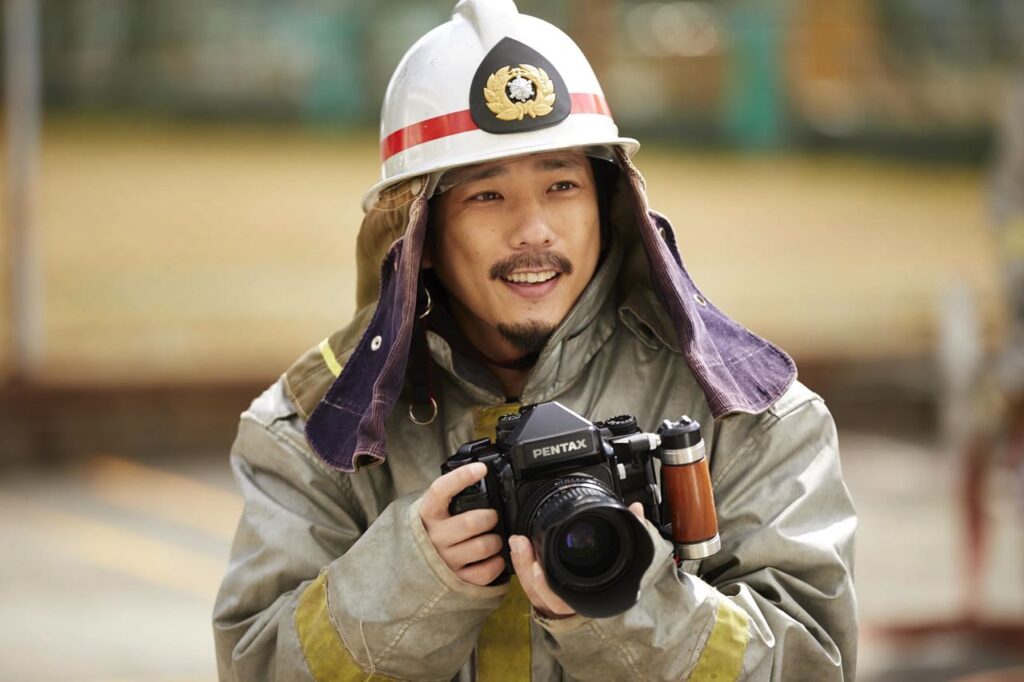by Brian Hioe
語言:
English
Photo Courtesy of Toho
This is a No Man is an Island film review written in collaboration with Cinema Escapist. Keep an eye out for more!
THE ASADAS is a heartfelt, if slightly unoriginal look at the life of photographer Masashi Asada, purportedly based on real events.
Masashi is born as the irresponsible, delinquent son of the Asada family. Despite Masashi’s rebellious proclivities, the Asadas remain a loving family that encourages his creative pursuits. Consequently, Masashi makes his family the focus of his creative works.
For instance, Masashi’s first photobook centers on his parents’ unfulfilled childhood dreams—depicting his father as a firefighter, for example. Masashi then moves on to other family members, for example depicting his family as racecar drivers to fulfill his older brother’s unfulfilled childhood dream. Other photo projects take a similarly fanciful vein, for example depicting the Asadas as gangsters, pearl divers, and a whole range of other career pursuits.
Thanks in part to the sponsorship of his childhood friend and romantic interest Wakana, Masashi eventually overcomes years of struggle to become a successful photographer. Taking photos of his family leads to commissions from other families who, similarly, want photos which embody them at their happiest moments.

Photo courtesy of Toho
However, Masashi’s life suddenly changes after the 311 Tohoku earthquake and tsunami, which brackets the film into two halves Though Masashi and his immediate family are not affected, he is shocked to learn that one of his clients has gone missing, and heads to the disaster zone in search of them.
There, Masashi quickly becomes involved in a project to wash earthquake and tsunami-deposited grime from the photos of families affected. At the same time, when his father has a stroke, Masashi is forced to reflect on the meaning of family.
The Asadas’ first half takes a largely cheerful tone. Though Masashi is initially depicted as an adrift, struggling artist, one knows he will succeed before long. To this extent, Masashi’s successes are always buoyed by his family’s willingness to support him in his endeavors.

Photo courtesy of Toho
The second half of the movie, in which Masashi decides to commit himself to assisting photo recovery efforts in Fukushima, proves a large tonal shift. This sometimes verges on the melodramatic, perhaps undercutting the serious topical matter. At the same time, there is somewhat of a disconnect from the first half of the film, with the titular Asadas largely dropping out of the picture to focus just on Masashi.
All in all, The Asadas accomplishes its aims. The film is nothing if not well-realized, in that it hits all the beats with aplomb, driven by strong acting and detailed settings. This is true whether in depicting the Asada family home, or with the later scenes of destruction in Fukushima.
Even so, one cannot help but find that The Asadas lacks some true sense of struggle. While the movie may aim to tell the true story of the real-life Masashi Asada’s successes, those successes always seem driven by how his loved ones always support him unconditionally–with no real sense of sacrifice on his or their part. Perhaps in this respect, the characters of The Asadas come off as slightly one-dimensional.



